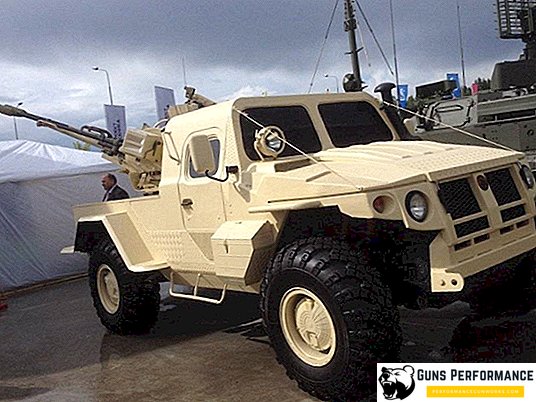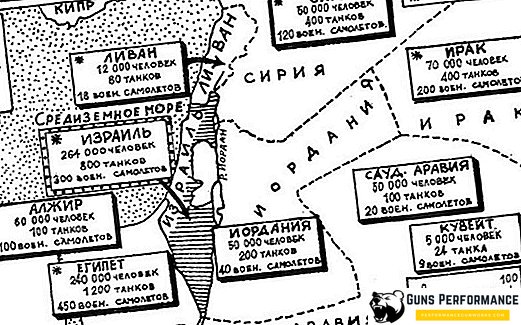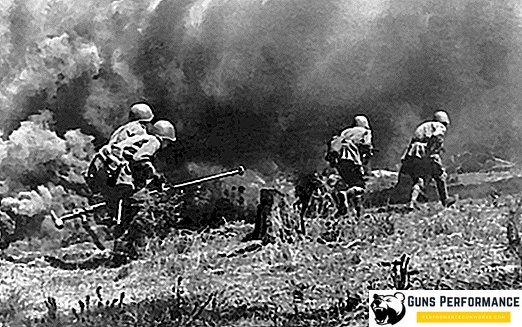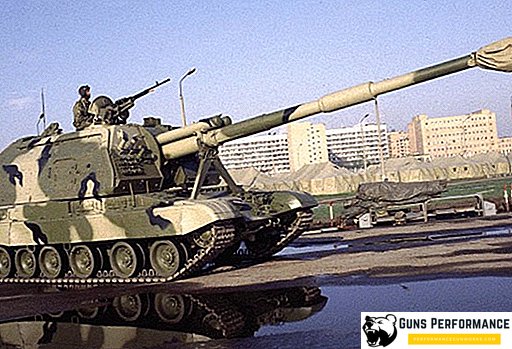Work on the creation of over-maneuverable, double combat vehicle was started in the Sukhoi design bureau since the mid-1980s. By the autumn of 1988, tests of the first sample began at the Irkutsk plant of IAPO. Model Su-30 was adopted in 1992.

Features exterminate the Su-30 and its technical characteristics
The Su-30 combat fighter is a two-seat variation of the Su-27 and has the technical capabilities to perform complex flights with long duration and range. The crew of such a machine consists of a pilot who performs piloting and control of the melee armament, and a pilot-operator, who solves questions of navigation, monitoring the air situation of a long-range combat. In addition, the second crew member controls long-range radar detection systems to target them, and also has the ability to control group combat operations of aircraft links, up to 4 vehicles.
The Su-30 is equipped with new equipment systems that allow it to significantly expand its technical capabilities and characteristics. These include:
- the system of flight refueling of fuel, equipped with a manufactured rod located in the compartment in front of the cabin;
- radio long-range navigation and guidance;
- television widescreen indicator of tactical situation for coordinating group actions;
- improved life support system.

The high combat effectiveness of the Su-30 is determined by its high maneuverability characteristics in all weather conditions, the ability to detect air targets at long range, as well as its individual performance characteristics:
- wing span - 14.7 m;
- length / height - 21.94 m / 6.36 m;
- normal / maximum take-off weight, kg - 18800/33000;
- range, km with one refueling / without refueling - 5200/3500;
- lifting speed - 330 m / s;
- practical lifting ceiling - 19,500 m.
Today, the maneuverable Su-30 fighter is in excess of one of the main export products of the military-industrial complex of Russia. Attention to the fighter is shown by India (in 2018 they plan to purchase 126 modified Su-30 aircraft), Venezuela, Angola, Algeria, Iraq (as of the beginning of 2018 received 5 aircraft), the PRC.

The layout of the Su-30
The new Su-30 fighter has an integral layout and is made according to the normal aerodynamic configuration. The fuselage is integrally mated with the wing and consists of the following main parts:
- the head part is designed as an all-metal semi-monocoque, where the avionics avionics, radar, front landing gear niche flap, radio transparent fairing and cockpit canopy are located;
- the middle part with the main carrier of the aircraft, the center section, made in the form of a fuel tank-compartment, with a power unit gargrot, the technical capabilities of which allow installation of equipment and lines of communications, sash main landing gear, brake flap;
- the tail end with two power nacelles engines, tail beams, central fuselage beam, which includes the rear fuel tank compartment, the central equipment compartment, the tip of the central beam with side flippers and a container with brake parachutes;
- adjustable air intakes are placed under the influx of wings and are equipped with a special manufactured mesh, which prevents foreign objects from entering the engines during takeoff and landing.

The trapezoidal mid-wing is three-spar wing and has a decompression design. Its mechanization consists of rejected flaperons with an area of 4.9 m2 with functions of ailerons and flaps, as well as rejectable adaptive two-piece socks with an area of 4.6 m2. Deviations of socks and the release of flaperons are carried out during takeoff-landing modes, or during maneuvering, when the instrument speed is up to 860 km / h. Detachable wing consoles have a sweep angle of 42 °.
The retractable landing gear has a reinforced design for a large take-off and landing mass. It is made of three bearings, with its main one-wheeled supports, nasal - two-wheeled.
Pilot double cabin Su-30 is made according to the “tandem” scheme for two pilots and is divided into two parts, the rear and the front. Both parts of the cab are completely sealed and have a common two-section drop-shaped lantern for both of them with a large glass area and a movable segment.

In the front cockpit, multifunctional liquid crystal displays are installed with indicators displaying aiming and navigation information and control panels against the background of the windshield. The steering lever has a joystick for targeting and trimming, a weapon selection switch with a shooting button on the reverse side.
In the back cabin of the aircraft is the commander of the group, whose place is elevated relative to the front cockpit, which provides a good overview in all directions of both crew members. There are also duplicate aircraft control levers and special guidance and communication equipment. The cockpit is equipped with a television widescreen indicator of a tactical situation, designed to collect all the necessary tactical information about the characteristics and coordinates of the movement of targets and the position of the interceptors in the air in the group.

Su-30 engines
The power plant of the Su-30 fighter consists of two turbojet two-chamber AL-31F engines, which provide it with a speed of 2350 km / h at high altitude and 1350 km / h on the ground. The value of the afterburner mode is 12,500 kgf, with a maximum of 7770 kgf each. The engine has a modular package and consists of: jet, supersonic nozzle and afterburner, 9-stage high-pressure compressor, single-stage high and low pressure turbines, annular combustion chamber, external circuit, 4-stage low-pressure compressor with adjustable guide, intermediate casing with the central box of drives.
Such engines have a characteristic feature - these are unique turbine blades having perfect operational and mechanical characteristics. They are equipped with an efficient cooling system and are made of a heat-resistant monocrystalline alloy.

Su-37 engines can operate for 20-30 seconds in the so-called “oil starvation” mode (when the oil pressure drops to 0 after an inverted flight begins), under the influence of negative and near zero overloads. In order to increase the reliability of the oil supply for lubricating the engine under such operating conditions, the design of the oil tank of the lubrication system and the oil system have been reworked and improved. The new oil block in its design has a flexible oil intake, a negative overload compartment, a cyclone air and oil separator, negative overload compartment venting valves.
Al-31F engines have an autonomous thrust vector control system. It works on kerosene, which is taken from the engine fuel supply system and does not depend on the aircraft’s hydraulic system.
The engines are placed in separate engine nacelles, which allows them to avoid aerodynamic interaction.

Features of the Su-30 fighter armament
The Su-30 can carry weapons consisting of missiles and gun and rifle equipment. Rifle armament installed in the influx of the right wing and is represented by a single-barreled rapid-fire gun GSH-301 with a caliber of 30 mm and an ammunition load of 150 rounds. The rocket is based on AKU (aviation ejection devices) and APU (aviation launchers).
Guided weapons consists of missiles of various modifications:
- medium range air-to-air class P-27;
- R-27R radar semi-active homing heads;
- with self-guided thermal heads Р-27Т;
- melee with thermal heads R-73;
- increased flight range of the R-27ER or R-27ET.
Missile armament can be suspended at 10 points, 4 of which are located under the wing consoles, 2 each are under: the center sections according to the tandem scheme, engine nacelles, wing tips. The weight of the total combat load can be - 8000 kg.

Today, Su-30 military fighters are manufactured by Irkut Corporation. In 2018, she announced the release of 60 units of a combat vehicle, some of which will be used to equip air bases in the Crimea.












